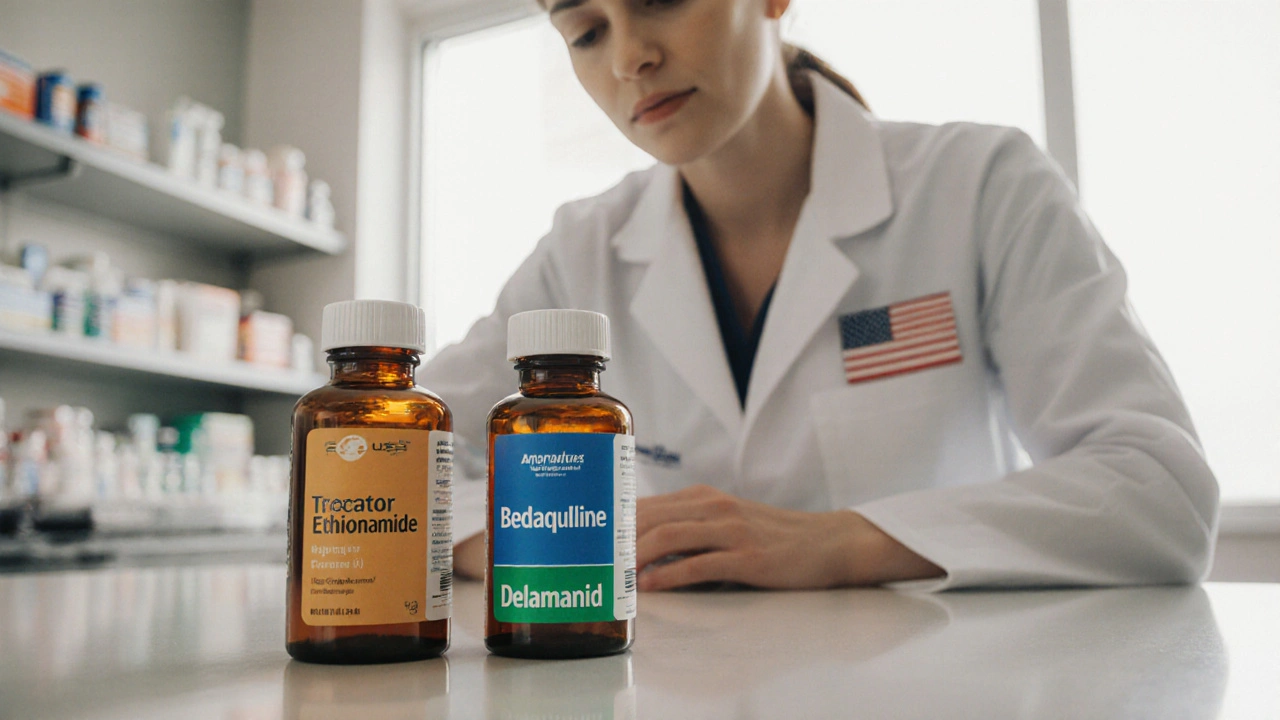When dealing with MDR‑TB treatment, the medical approach to manage multi‑drug‑resistant tuberculosis infections. Also known as multi‑drug‑resistant TB therapy, it aims to cure patients while preventing further resistance. MDR‑TB treatment is challenging because the bacteria defy the two most powerful first‑line drugs, isoniazid and rifampin. The condition itself, multi‑drug‑resistant tuberculosis, a form of TB that does not respond to at least isoniazid and rifampin, often spreads in communities with weak health infrastructure. To tackle it, clinicians rely on a mix of second‑line medicines, strict monitoring, and public‑health support. This mix encompasses longer drug regimens, higher pill burdens, and more frequent side‑effects, which means patients need clear guidance and close follow‑up. Effective MDR‑TB treatment also requires accurate drug susceptibility testing to pick the right drugs, while national guidelines shape how doctors compose those regimens.
The backbone of most regimens today is a group of second‑line anti‑TB drugs, medicines such as fluoroquinolones, injectable agents, and newer oral drugs like bedaquiline and delamanid. These drugs often work together for 18‑24 months, and their success hinges on proper dosing and patient adherence. The WHO treatment guidelines, the global reference that recommends specific drug combinations, treatment duration, and monitoring strategies provide a clear framework that many countries follow. One core recommendation is to use a fully oral regimen whenever possible, reducing the need for painful injections. Another critical step is drug susceptibility testing, laboratory analysis that determines which antibiotics a TB strain can still defeat. By matching the drug cocktail to the TB strain’s resistance pattern, clinicians cut down on unnecessary toxicity and improve cure rates. Directly observed therapy (DOT) remains a cornerstone, ensuring patients take every dose under supervision, which the WHO guidelines stress as vital for preventing further resistance.
Beyond the drugs and guidelines, real‑world success depends on patient support—nutrition counseling, side‑effect management, and mental‑health resources. Newer agents like pretomanid add hope for shorter, all‑oral regimens, and ongoing trials explore shorter treatment durations without sacrificing efficacy. As laboratories expand rapid molecular testing, the time from diagnosis to the right regimen shrinks, giving patients a faster path to recovery. All these pieces—accurate testing, evidence‑based regimens, WHO‑backed protocols, and robust patient support—form a network that makes MDR‑TB treatment more doable today than a decade ago. Below you’ll find a curated list of articles that dive deeper into each of these topics, from drug comparisons to practical buying guides for related medicines, helping you navigate the complex landscape of multi‑drug‑resistant TB care.

A deep dive into Trecator SC (Ethionamide), its role in MDR‑TB therapy, and how it stacks up against newer alternatives like Bedaquiline and Delamanid.
View more